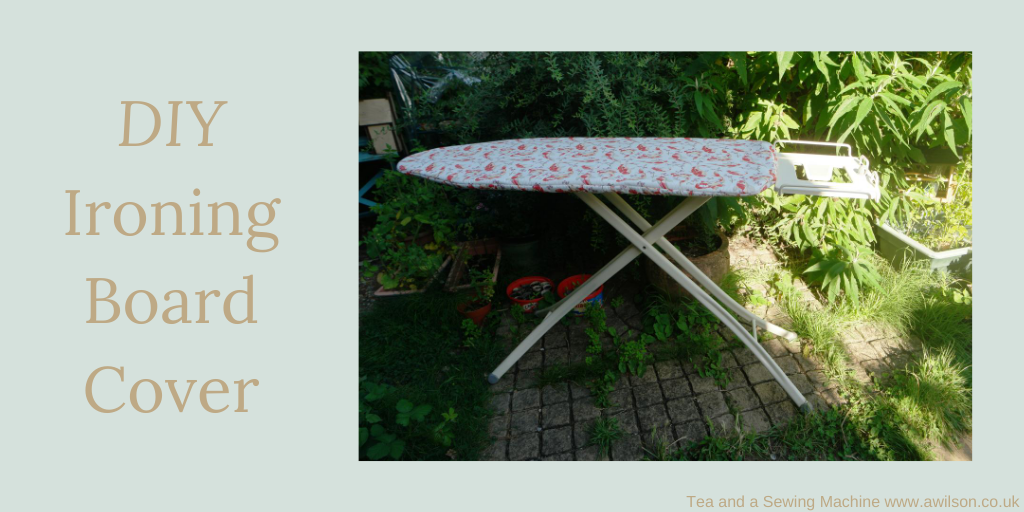
This post contains affiliate links.
A mild annoyance in my life is my ironing board.
I’m not one for ironing. I belong to the “give a good shake and it will be fine” school of laundry! Hubby wears casual clothes for work so does’t need nicely ironed shirts, and on the rare occasions that he does, he’ll iron it himself.
When I do use the iron and the ironing board however, is when I’m sewing.
As a non ironer, it’s tempting to skip the pressing stage! But I know that to get a neat finish, I need to press the seams.
The problem with our ironing board is that it is huge. And being huge, it’s difficult to find an ironing board cover that fits when it needs replacing.
The last one I bought claimed to fit all ironing boards including large ones, but it didn’t! I could barely get it to stay on for long enough to press a couple of seams. Being a normal tired human and not an octopus, I found it rather difficult to hold the ironing board cover on to the ironing board, operate the iron and move the thing I was ironing around.
Anyway, I decided that I’d finally had enough, so I would make one.
I’m being quite good at the moment about not buying fabric, but when I had a rummage in the fabric pile, I couldn’t find any pieces of fabric big enough to make a DIY ironing board cover for the ridiculously enormous ironing board. So I’ve had to buy some.
I love this fabric. The koi carp and the cherry blossom remind me that although we didn’t make it to Japan in April, it’s still there and we’ll visit at some point.
I also used Insul Bright to make the DIY ironing board cover, which is a brand of thermal interfacing.
Both the batting and the fabric came from Remnant House in Yorkshire. This isn’t an affiliate link, I want to do my bit to support small businesses. They have lots of lovely fabric, in particular Rose and Hubble and their prices are reasonable. They’re also helpful if you need to talk to them on the phone.
The cover is attached to the board using elastic.
The instructions below will work of any size of ironing board as you make it to fit your particular board.
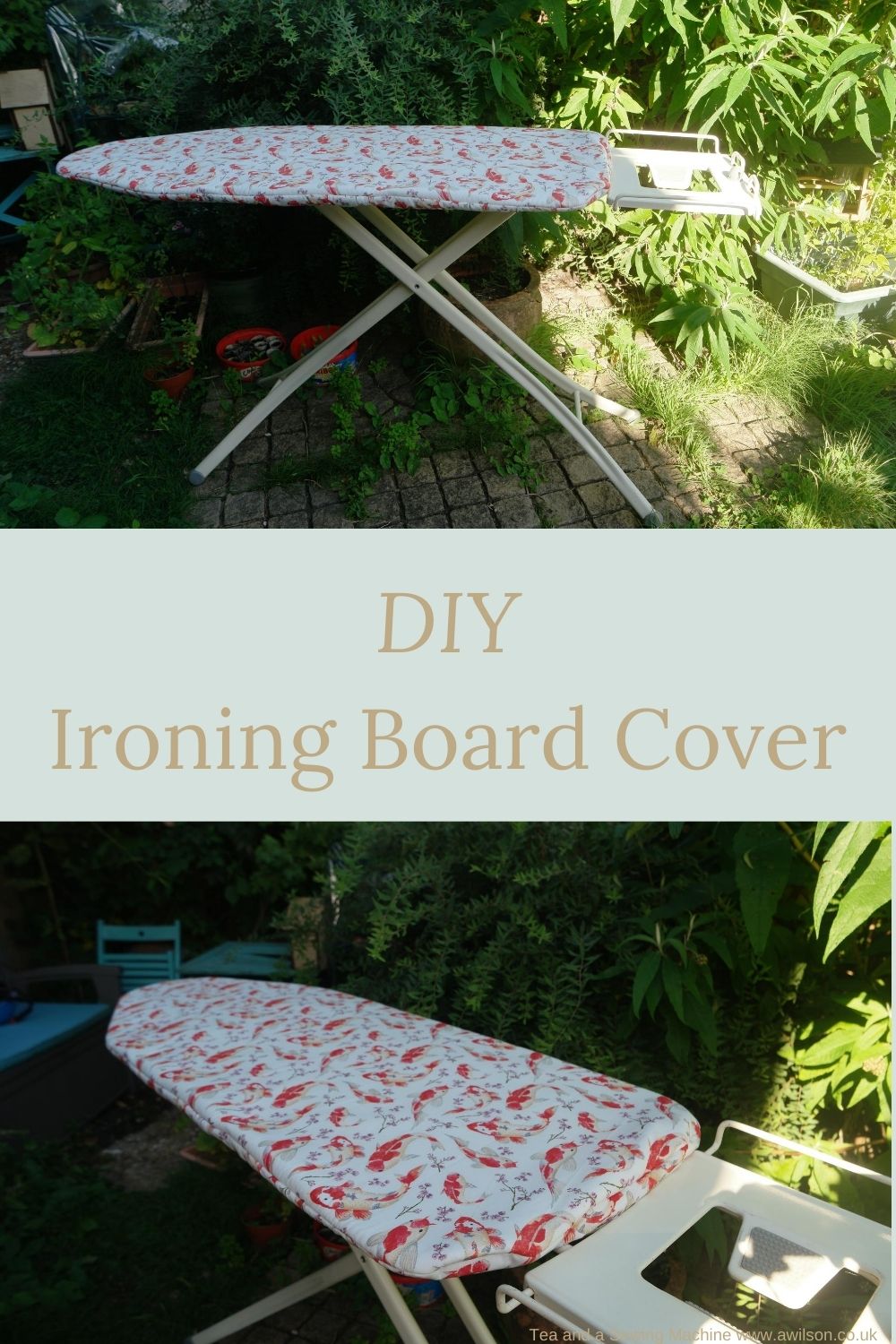
Instructions
You Will Need
Large pieces of paper. Pattern paper is ideal. You could also use brown paper or newspaper as an alternative.
Pencil or pen
Fabric. It needs to be cotton so that it can cope with the iron getting hot.
Interfacing. I used Insul Brite which has thermal properties, but cotton batting will do if that’s what you have.
Elastic. You’ll need enough to go all round the outside of the ironing board. I used this.
Bias binding to finish the raw edges.
Making the Pattern
The best way to make a DIY ironing board cover that fits your ironing board perfectly is to draw round it!
If you don’t have enough floor space, you could prop the ironing board against the wall with the paper in between. My advice here would be to use a pencil rather than a Sharpie, especially of your pattern paper is on the thin side!
When you’ve done this, fold it in half. You might need to adjust it a bit.
You’ll need to add a bit around the outside to allow for the depth of the board and the seam allowance. My ironing board is 1.5 cm deep, so I added 3.5 cm to allow for a 2 cm seam allowance plus the depth.
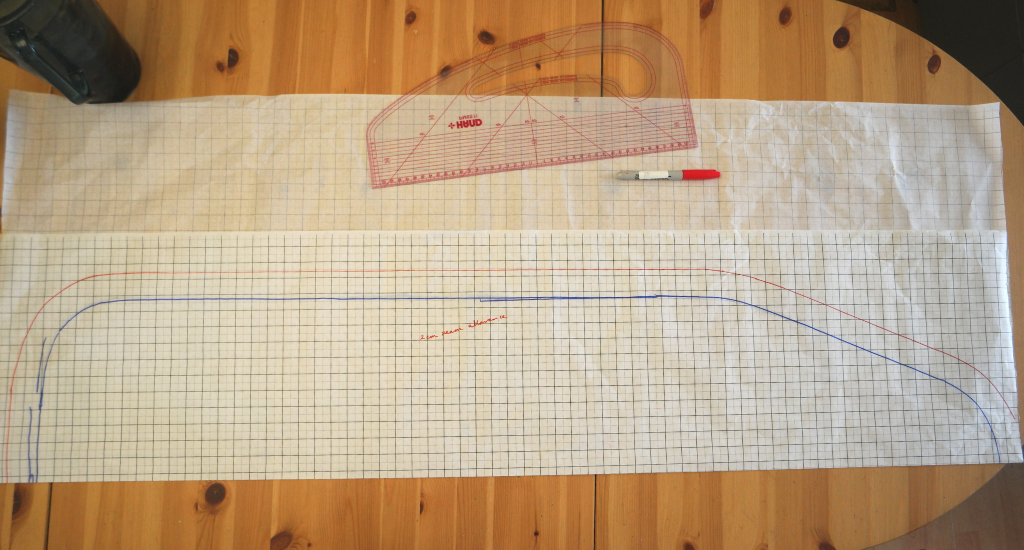
The bit that keeps the cover on the ironing board is made from 2 different pieces cut out on folded fabric.
Take your pattern piece and fold it into 4.
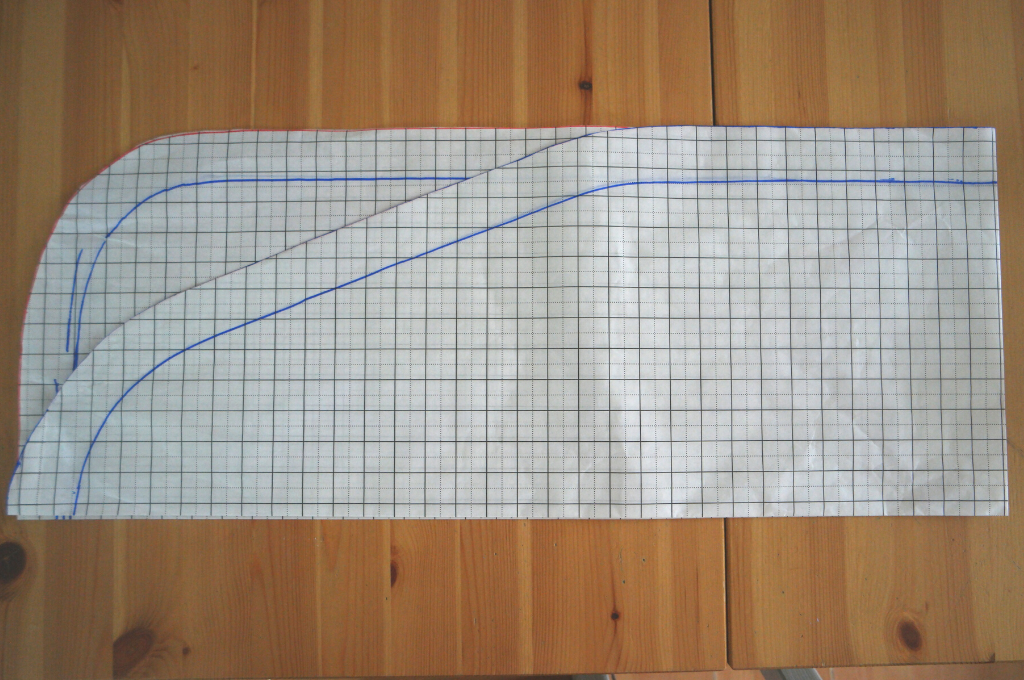
Draw round the outside edge of one of the quarters. Now draw a line 12 cm down from your original line, following the shape of the line. Do the same with the other quarter. Don’t forget to add seam allowances at either end!
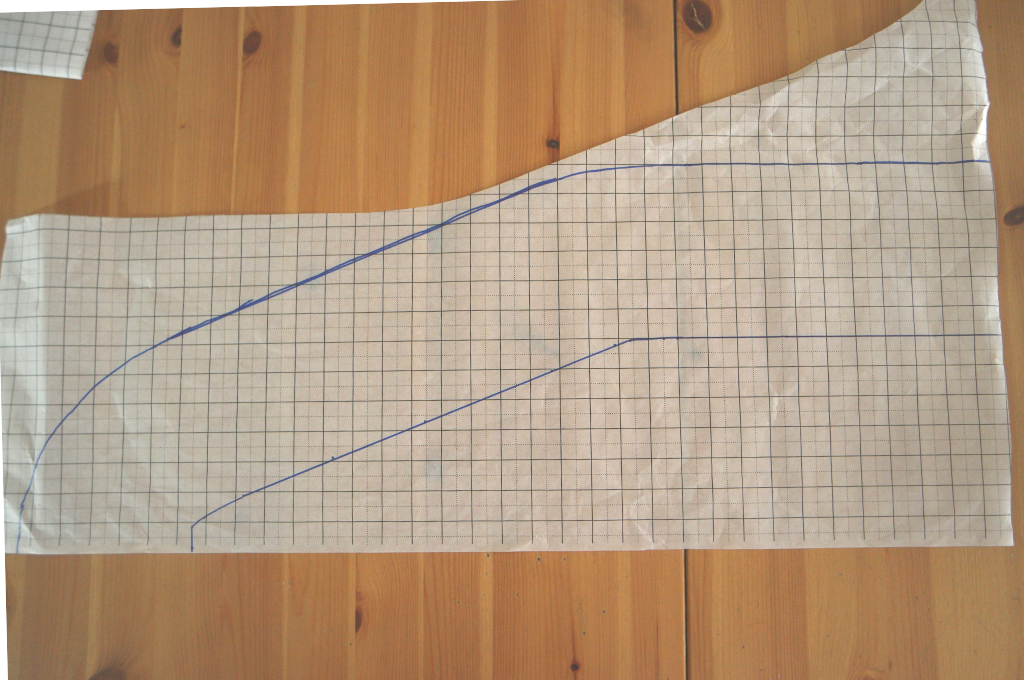
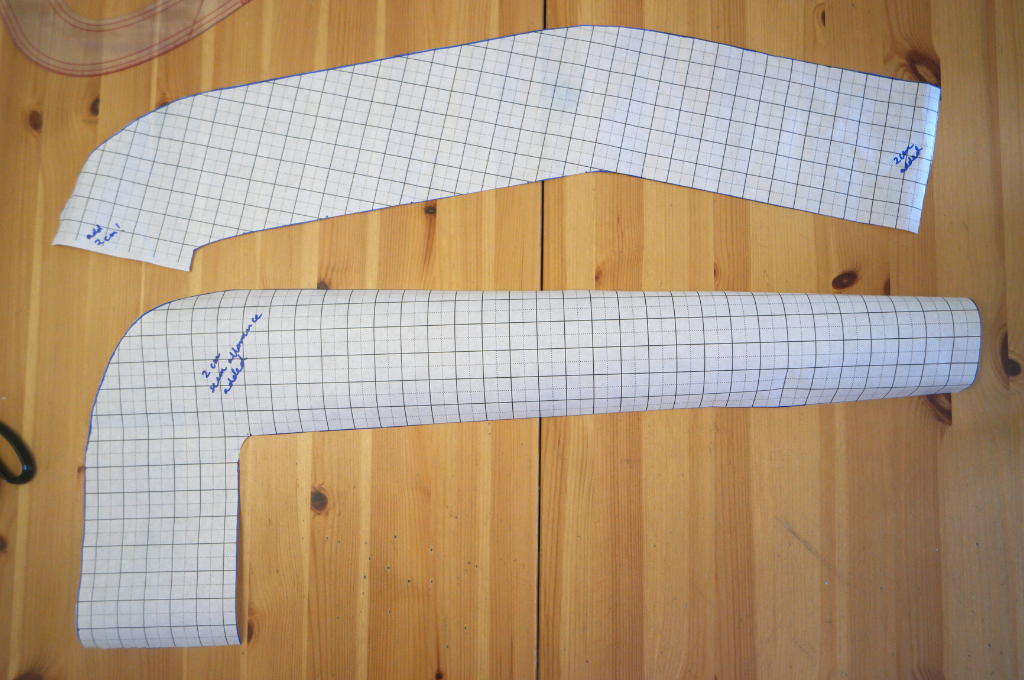
Before you do this, you might like to check that this is a good size for your ironing board and you won’t end up with the cover getting in the way of the legs unfolding. This was a good size for my ironing board.
Cutting Out
From the main pattern piece, cut one from your cotton fabric. You might prefer to fold your pattern piece in half and cut it on the fold. You’ll also need to cut at least one from your batting. I cut two layers.
For the bottom sections, you’ll need 2 of each, cut on folded fabric. I used 1 layer of interfacing for these.
How you cut them is up to you! I had originally intended to cut 2 of each and sew them together, but I ended up cutting the top section on the fold, so it was in one piece, and the lower section as separate pieces. If you do decide to cut one or both pieces on the fold, remember that you won’t need the seam allowance on the folded part.
Assembling the Ironing Board Cover
Join the bottom sections together, with the interfacing on the wrong side of the cotton fabric. Insul Bright doesn’t have a wrong side, so it doesn’t matter which way round it goes.
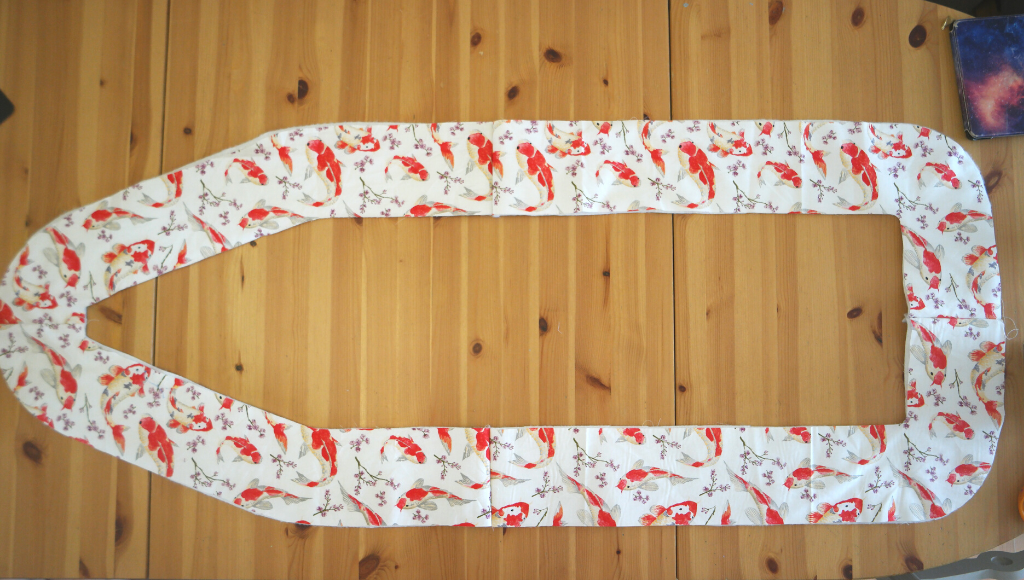
Finish the inside edge with bias binding.
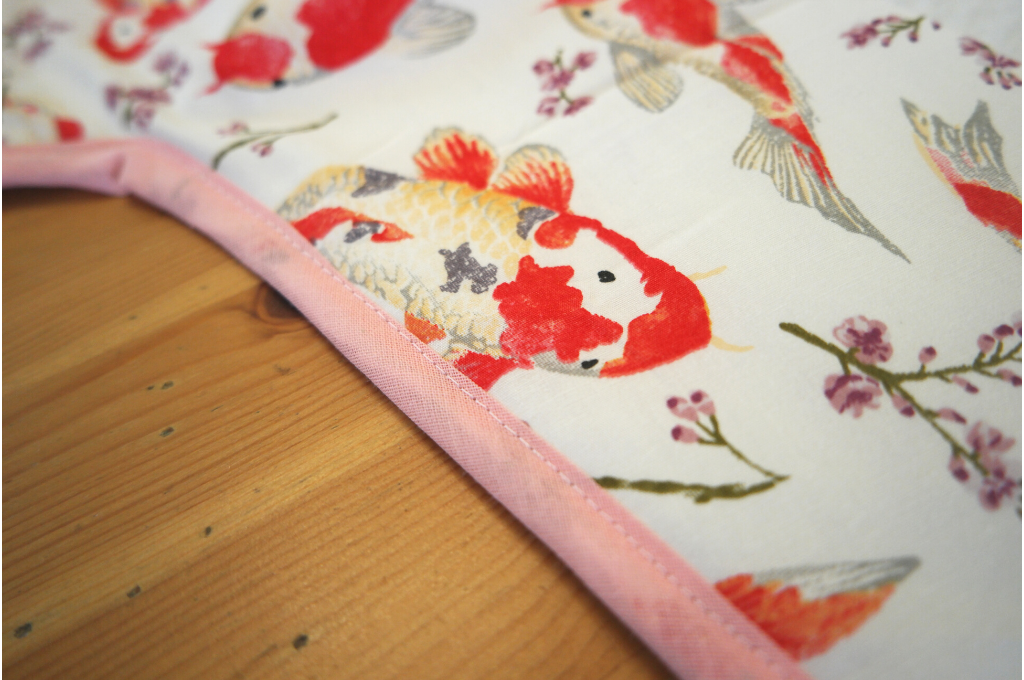
Pin the bottom bit to the top section. The cotton sections should be next to each other with the right sides together, with the interfacing on either side.
Sew the bottom and top bits together. Trim the seam.
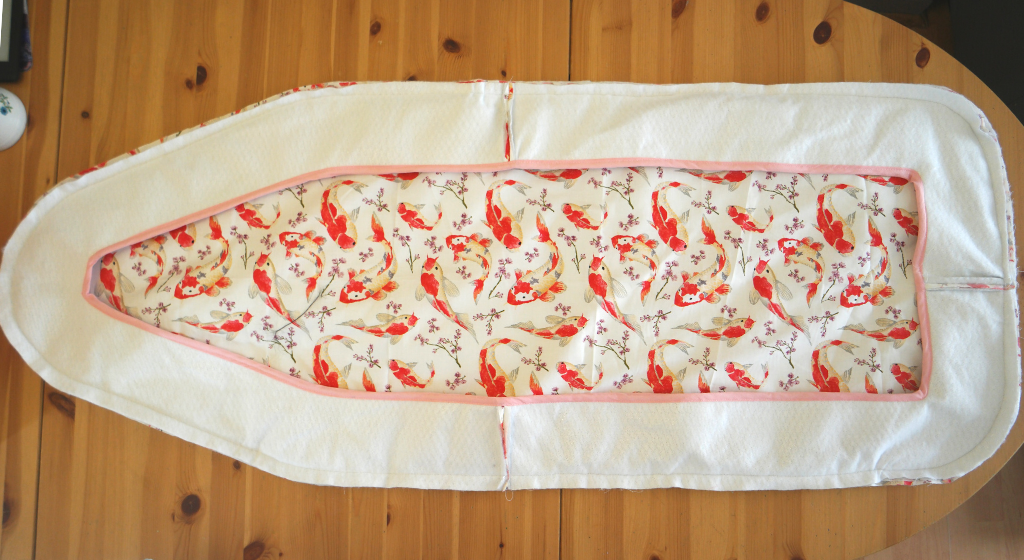
Almost there! The last job is to sew the elastic to the inside of the bottom bit. While you’re sewing, stretch the elastic a little bit. It’s not necessary stretch it out all the way, but pulling it a bit will help to fit snugly round the ironing board.
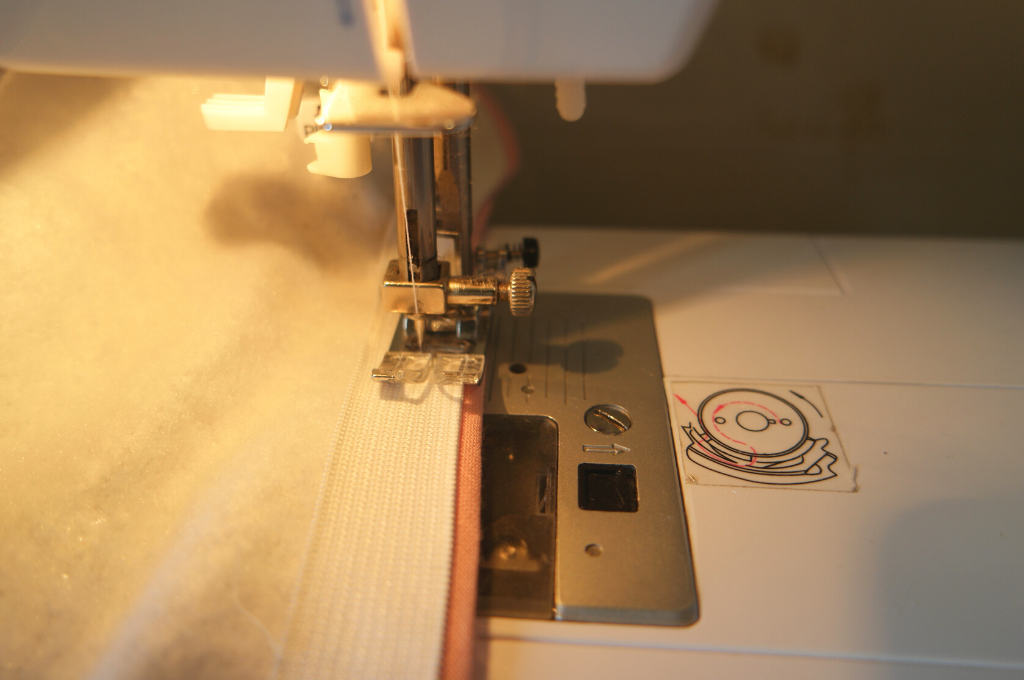
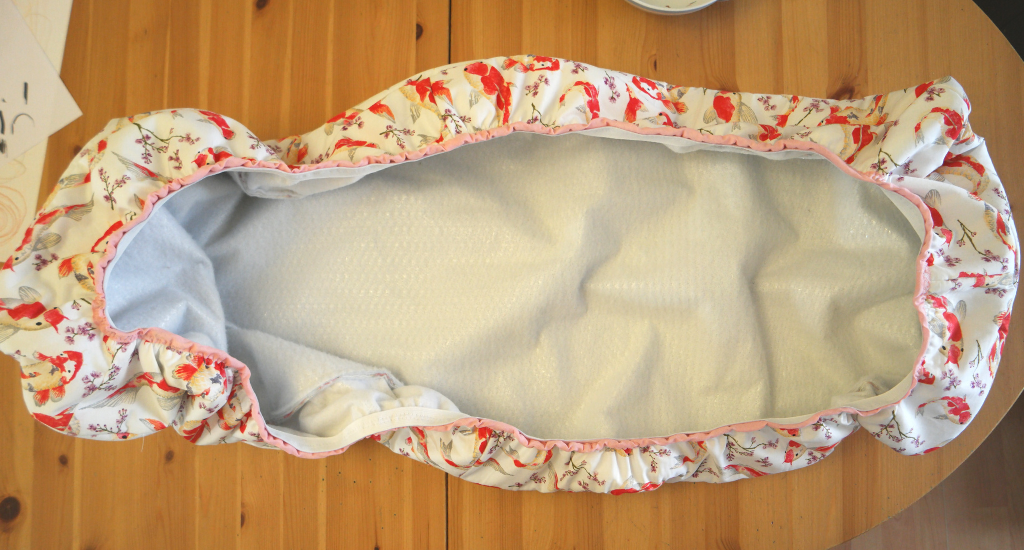
All done! I might even take up ironing!
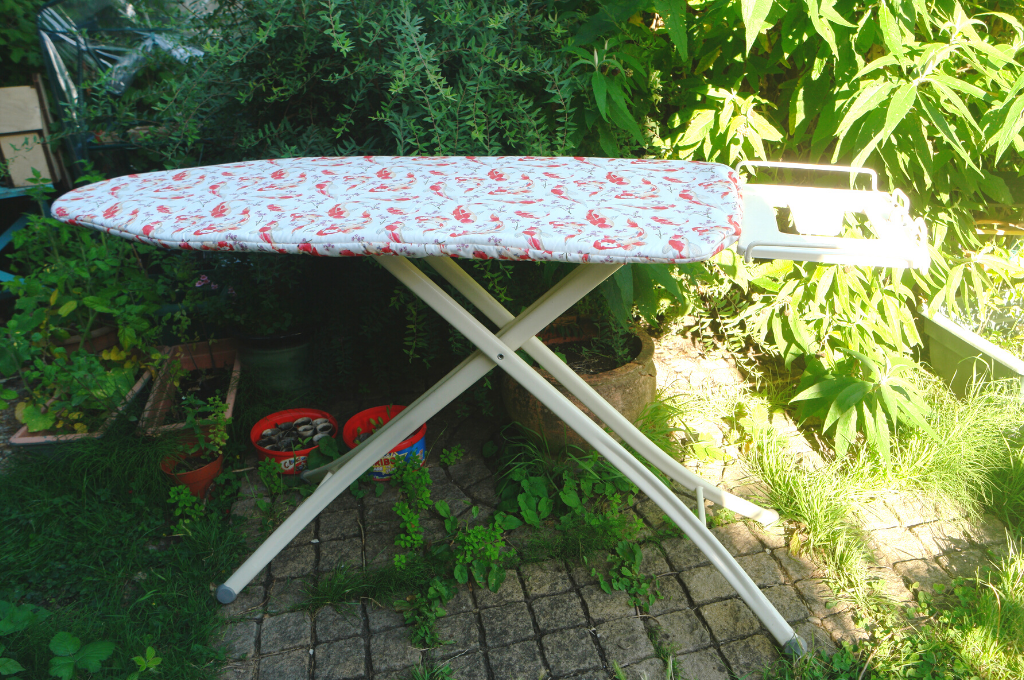
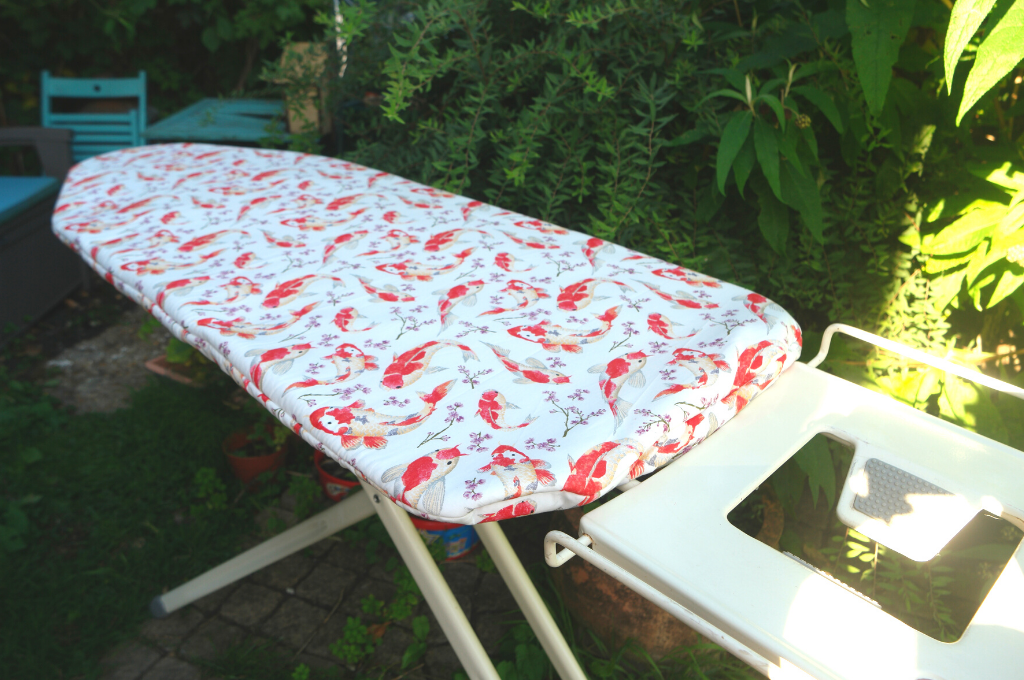
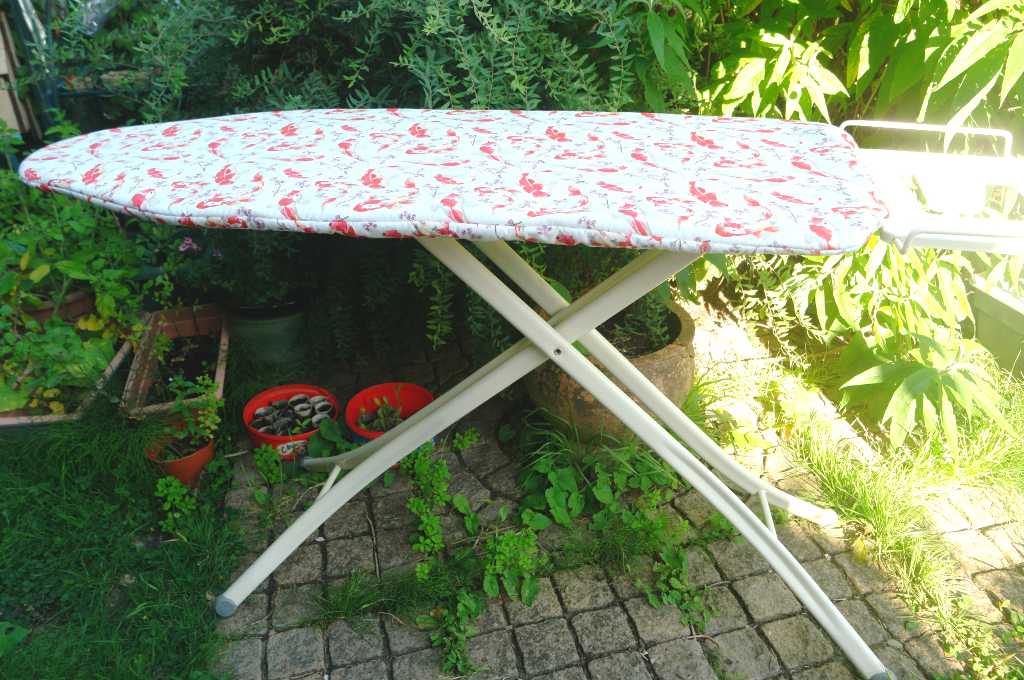


This takes me back! My mother always made her own ironing board covers, using up old sheets and blankets. Was it just that she was extra thrifty (well, she was from Yorkshire) or was it that in the 50s and 60s everyone made their ironing board covers? I don’t know. I made myself a new cover and my stepdaughter was just amazed that anyone would do such a thing.
Thinking about it actually, when I was a little girl we had an ancient ironing board that my mum used to do sleeves. As far as I recall, that had a cover made from a sheet and a blanket. My grandmother was from Birmingham, so perhaps it was a thing everywhere x